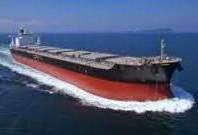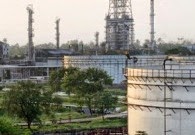The U.S. exported 268,000 bpd of crude oil in April (the latest data available from the U.S. Census Bureau), the highest level of exports in 15 years, reported the U.S. Energy Information Administration. Exports have increased sharply since the start of 2013, and have exceeded 200,000 bpd in five of the past six months. The increase in crude exports is largely the result of rising U.S. crude production, which was 8.2 million bpd in March.
To export crude oil from the U.S., a company must obtain a license from the Bureau of Industry and Security (BIS) of the U.S. Department of Commerce. Under export licensing requirements, the following kinds of transactions will generally be approved:
Exports from Alaska' s Cook Inlet
Exports to Canada for consumption or use therein
Exports in connection with the refining or exchange of strategic petroleum reserve oil
Exports that are consistent with international energy supply agreements
Exports of foreign-origin crude
Exports of California heavy crude up to an average of 25,000 bpd
Temporary exports or exchanges
Licenses for other exports of U.S.-origin crude are considered on a case-by-case basis. For such other exports, the regulations describe the characteristics of transactions that will generally be approved as in the national interest.
Almost all of the crude oil exported from the U.S. has been delivered to Canada, and most of the recent increase in crude oil exports has been from the U.S. Gulf Coast (PADD 3). Gulf Coast crude exports averaged 134,000 bpd in first-quarter 2014, a 283% increase over 2013' s record high of 35,000 bpd. In first-quarter 2014, nearly 75% of Gulf Coast exports have left the region from the Houston-Galveston district, in Texas. The remaining barrels were loaded in Port Arthur, Texas, and New Orleans, La.
Exports from the East Coast (PADD 1) averaged 30,000 bpd in first-quarter 2014, down slightly from 2013 levels, but up from 9,000 bpd in 2012. First-quarter exports from PADD 1 were evenly distributed between the Port of New York and Portland, Maine, which is the starting point of a pipeline that delivers crude to refineries in the Montreal area. Exports of crude from the Midwest (PADD 2) have long been a source of crude for refineries in Sarnia, Ontario.
Providing useful resources, articles and writings on crude oil, other petroleum products, energy and gas. By Mega Billion Corporation BLCO seller, Nigeria, online.

 Mega Billion Corporation Limited is a leader in the of Nigerian Bonny Light Crude Oil (BLCO) sales market. As a privately held company, Mega Billion Corp. Nigeria Ltd is committed to and is focused on delivering reliable services to all her clients.
Mega Billion Corporation Limited is a leader in the of Nigerian Bonny Light Crude Oil (BLCO) sales market. As a privately held company, Mega Billion Corp. Nigeria Ltd is committed to and is focused on delivering reliable services to all her clients.  Mega Billion Corporation Nigeria Limited has an excellent track record of reliability in the supply of Bonny light crude oil, BLCO. We protect our buyers with 2% Performance Bond while we also expect protection from our customers with bank instrument from the world's top banks. We deliver on TTO, TTT, CIF and FOB basis.
Mega Billion Corporation Nigeria Limited has an excellent track record of reliability in the supply of Bonny light crude oil, BLCO. We protect our buyers with 2% Performance Bond while we also expect protection from our customers with bank instrument from the world's top banks. We deliver on TTO, TTT, CIF and FOB basis.
No comments :
Post a Comment